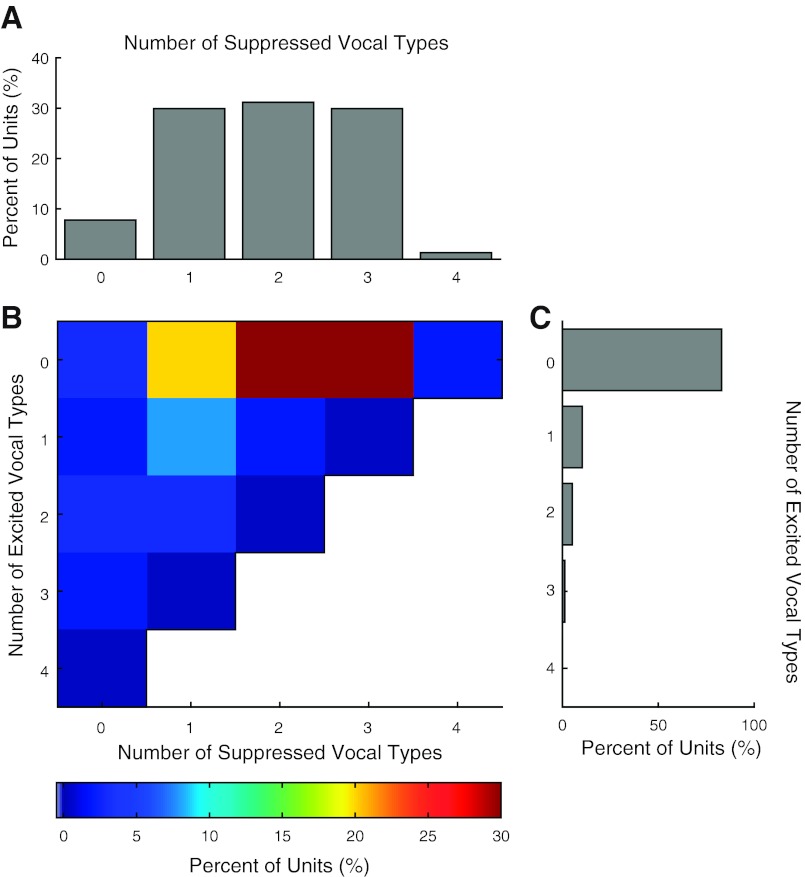Fig. 14.
Comparison of significant vocalization responses within individual units to multiple call types. Units sampled with all 4 calls (N = 77) were examined to determine the number of call types evoking suppression or excitation. A: % of call types evoking significant vocalization-induced suppression. Most units were significantly suppressed (P < 0.01, rank sum) for 1–3 of the call types. Units significantly suppressed during all 4 call types were rare (1.3%). B: distribution comparing the number of significantly suppressed and excited vocal responses for individual units. C: distribution of units excited during multiple call types. Unlike suppression, significant excitation occurred only for a small number of call types; only 10.4% were significantly excited by a single call type and none for all 4. Most units were significantly suppressed by 2 or 3 call types and excited by none (59.8%). It was uncommon for units to exhibit a mix of significant suppression and excitation; only 11.7% of units were suppressed for one call type and excited for one other. Less than 4% of units were significantly suppressed or excited for at least 2 call types and then had the opposite behavior for a third vocalization. Units with no significant response for any call type were rare (2.6%).

